Close to the entrance of this pub is a stylised boat with a curved sail, recalling the keel boats which once carried coal out to collier boats waiting on the Tyne. This pub is on a busy internal street, lit by a profusion of coloured neon lights. The pub is on the ‘Cityside’ of the street, facing ‘Quayside’. The well-known song ‘The Keel Row’ recalls the heyday of the keelmen, while the former Keelmen’s Hospital, founded in 1701, still stands on City Road.
Prints and text about The Keel Row.
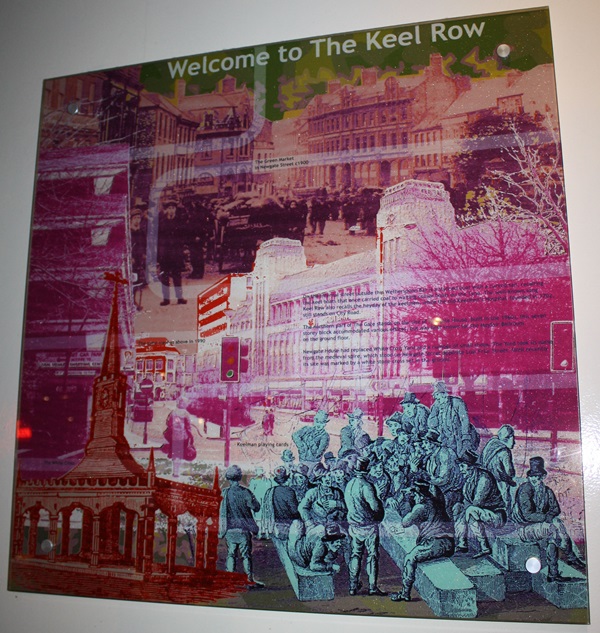
The text reads: On the internal street outside this Wetherspoon Bar is a stylised boat with a curved sail, recalling the keel boats that once carried coal to waiting collier boats on the Tyne. The well-known song Keel Row also recalls the heyday of the keelmen, while the old Keelmen’s Hospital, founded in 1702, still stands on City Road.
The northern part of The Gate stands on the site of Newgate House. Built in the 1960s, this seven story block accommodated various offices, but was best known for the Mayfair Ballroom on the ground floor.
Newgate House had replaced White Cross Yard and a number of small shops. The Yard took its name from the medieval spire, which stood on Newgate Street opposite Low Fair Street. Until recently its site was marked by a white stone cross set in the ground.
Prints and text about Black Friars.
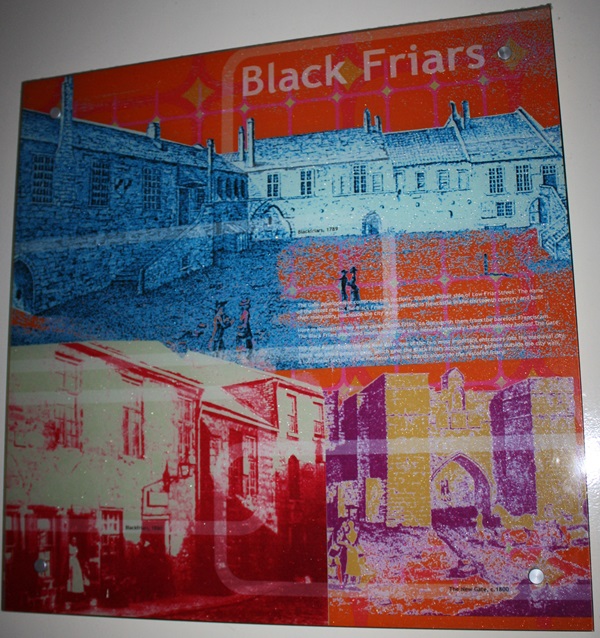
The text reads: The Gate development comprises two sections, situated either side of low Friar Street. The name of the street recalls Black Friars, who settled in Newcastle in the thirteenth century and built their monastery just inside the city walls.
Here in Newcastle they were called “Shod Friars” to distinguish them from the barefoot Franciscans. The Black Friars dispensed medicines to the sick, hence Dispensary Lane immediately behind The Gate.
The Gate itself recalls the old New Gate, one of the two most important entrances to the medieval city. There was also a postern gate, which gave the Black Friars access to their garden outside the city wall. A substantial section of the medieval wall still stands along the restored friary.
Prints and text about trading.
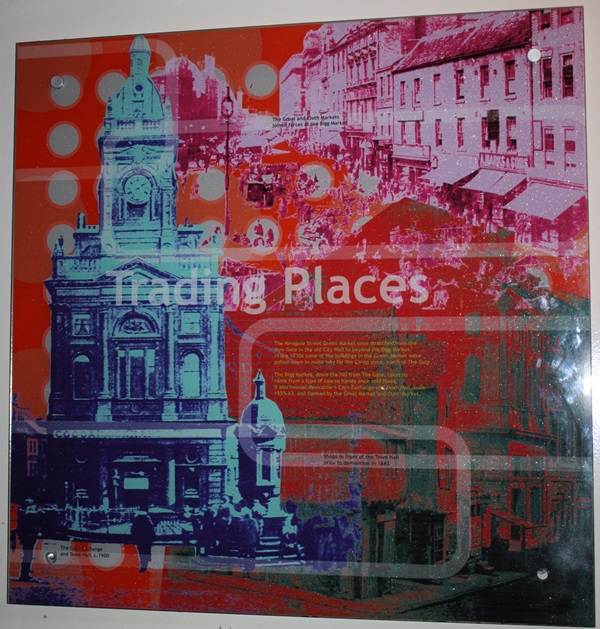
The text reads: The Newgate Street Green Market once stretched from the New Gate in the old City to beyond the Bigg Market. In the 1930s some of the buildings in the Green Market were pulled down to make way for the Co-op store north of The Gate.
The Bigg Market, down the hill from The Gate, takes its name from a type of coarse barley once sold there. It also housed Newcastle’s Corn exchange and Town Hall, built 1855-63 and flanked by the Groat Market and Cloth Market.
Prints and text about the town walls.
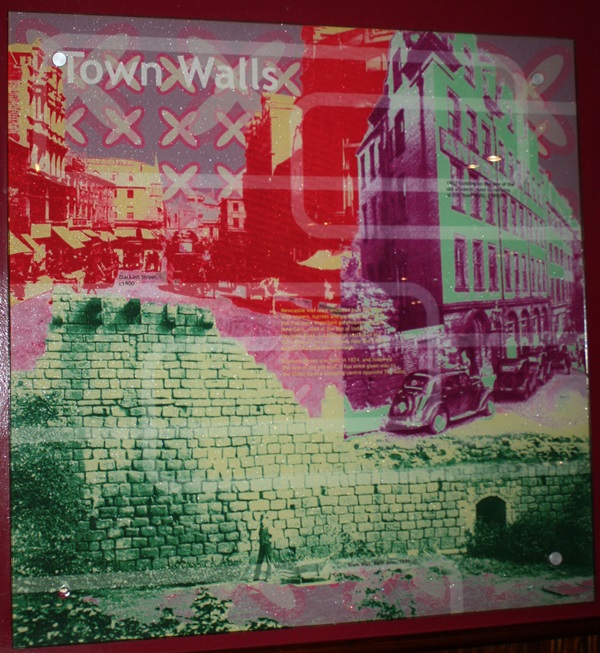
The text reads: Newcastle was once enclosed by a high wall, with towers, turrets and gatehouses. One of the most important gatehouses was the New Gate, sited at the top of today’s Newgate Road. A substantial section of the medieval wall still stands near the Friary behind The Gate development.
Blackett Street was built in 1824, and followed the line of the old wall. It has since given way to the Eldon Square shopping centre opposite The Gate.
A canvas painting by Felix Holst.
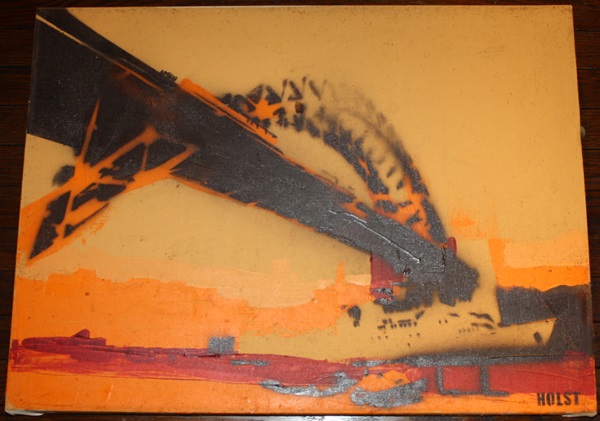
I have built up a steady following over the past three years on Tyneside with my work finding its way into the collections of several prominent figures in Newcastle’s vibrant music, club and restaurant scene.
Inspired by the geometry of modernist architecture and the monuments to the brilliance of mankind’s creativity that make up our city. This collection seeks to capture the vibrancy that is Tyneside by throwing away the dirty concrete and dull brick images that stereotype many a northern city, and introducing the colour and atmosphere experience whilst out and about contemporary Newcastle.
External photograph of the building – main entrance.
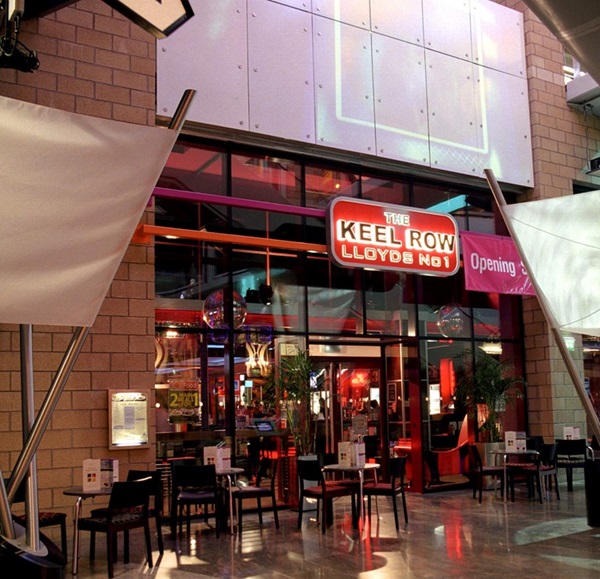
If you have information on the history of this pub, then we’d like you to share it with us. Please e-mail all information to: pubhistories@jdwetherspoon.co.uk